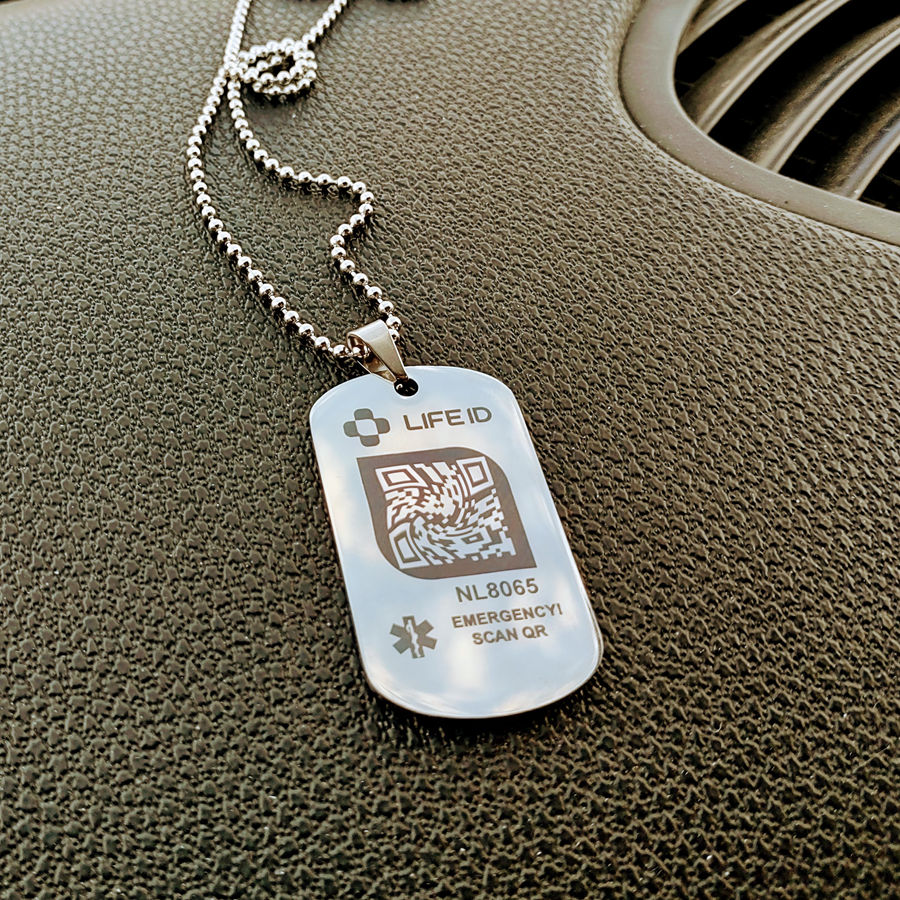
Everything you need to know about phobias
A phobia is a type of anxiety disorder that causes an individual to experience extreme, irrational fear about a situation, living creature, place, or object.
When a person has a phobia, they will often shape their lives to avoid what they consider to be dangerous. The imagined threat is greater than any actual threat posed by the cause of terror.
Phobias are diagnosable mental disorders.
The person will experience intense distress when faced with the source of their phobia. This can prevent them from functioning normally and sometimes leads to panic attacks.
In the United States, approximately 19 million people have phobias.
What is a phobia?
A phobia is an exaggerated and irrational fear.
The term ‘phobia’ is often used to refer to a fear of one particular trigger. However, there are three types of phobia recognized by the American Psychiatric Association (APA). These include:
Specific phobia: This is an intense, irrational fear of a specific trigger.
Social phobia, or social anxiety: This is a profound fear of public humiliation and being singled out or judged by others in a social situation. The idea of large social gatherings is terrifying for someone with social anxiety. It is not the same as shyness.
Agoraphobia: This is a fear of situations from which it would be difficult to escape if a person were to experience extreme panic, such as being in a lift or being outside of the home. It is commonly misunderstood as a fear of open spaces but could also apply to being confined in a small space, such as an elevator, or being on public transport. People with agoraphobia have an increased risk of panic disorder.
Specific phobias are known as simple phobias as they can be linked to an identifiable cause that may not frequently occur in the everyday life of an individual, such as snakes. These are therefore not likely to affect day-to-day living in a significant way.
Social anxiety and agoraphobia are known as complex phobias, as their triggers are less easily recognized. People with complex phobias can also find it harder to avoid triggers, such as leaving the house or being in a large crowd.
A phobia becomes diagnosable when a person begins organizing their lives around avoiding the cause of their fear. It is more severe than a normal fear reaction. People with a phobia have an overpowering need to avoid anything that triggers their anxiety.
Symptoms
A person with a phobia will experience the following symptoms. They are common across the majority of phobias:
- a sensation of uncontrollable anxiety when exposed to the source of fear
- a feeling that the source of that fear must be avoided at all costs
- not being able to function properly when exposed to the trigger
- acknowledgment that the fear is irrational, unreasonable, and exaggerated, combined with an inability to control the feelings
A person is likely to experience feelings of panic and intense anxiety when exposed to the object of their phobia. The physical effects of these sensations can include:
- sweating
- abnormal breathing
- accelerated heartbeat
- trembling
- hot flashes or chills
- a choking sensation
- chest pains or tightness
- butterflies in the stomach
- pins and needles
- dry mouth
- confusion and disorientation
- nausea
- dizziness
- headache
A feeling of anxiety can be produced simply by thinking about the object of the phobia. In younger children, parents may observe that they cry, become very clingy, or attempt to hide behind the legs of a parent or an object. They may also throw tantrums to show their distress.
Complex phobias
A complex phobia is much more likely to affect a person’s wellbeing than a specific phobia.
For example, those who experience agoraphobia may also have a number of other phobias that are connected. These can include monophobia, or a fear of being left alone, and claustrophobia, a fear of feeling trapped in closed spaces.
In severe cases, a person with agoraphobia will rarely leave their home.
Types
The most common specific phobias in the U.S. include:
- Claustrophobia: Fear of being in constricted, confined spaces
- Aerophobia: Fear of flying
- Arachnophobia: Fear of spiders
- Driving phobia: Fear of driving a car
- Emetophobia: Fear of vomiting
- Erythrophobia: Fear of blushing
- Hypochondria: Fear of becoming ill
- Zoophobia: Fear of animals
- Aquaphobia: Fear of water
- Acrophobia: Fear of heights
- Blood, injury, and injection (BII) phobia: Fear of injuries involving blood
- Escalaphobia: Fear of escalators
- Tunnel phobia: Fear of tunnels
These are far from the only specific phobias. People can develop a phobia of almost anything. Also, as society changes, the list of potential phobias changes. For instance, nomophobia is the fear of being without a cell phone or computer.
As described in one paper, it is “the pathologic fear of remaining out of touch with technology.”
Causes
It is unusual for a phobia to start after the age of 30 years, and most begin during early childhood, the teenage years, or early adulthood.
They can be caused by a stressful experience, a frightening event, or a parent or household member with a phobia that a child can ‘learn.’
Specific phobias
These usually develop before the age of 4 to 8 years. In some cases, it may be the result of a traumatic early experience. One example would be claustrophobia developing over time after a younger child has an unpleasant experience in a confined space.
Phobias that start during childhood can also be caused by witnessing the phobia of a family member. A child whose mother has arachnophobia, for example, is much more likely to develop the same phobia.
Complex phobias
More research is needed to confirm exactly why a person develops agoraphobia or social anxiety. Researchers currently believe complex phobias are caused by a combination of life experiences, brain chemistry, and genetics.
They may also be an echo of the habits of early humans, leftover from a time in which open spaces and unknown people generally posed a far greater threat to personal safety than in today’s world.
How the brain works during a phobia
Some areas of the brain store and recall dangerous or potentially deadly events.
If a person faces a similar event later on in life, those areas of the brain retrieve the stressful memory, sometimes more than once. This causes the body to experience the same reaction.
In a phobia, the areas of the brain that deal with fear and stress keep retrieving the frightening event inappropriately.
Researchers have found that phobias are often linked to the amygdala, which lies behind the pituitary gland in the brain. The amygdala can trigger the release of “fight-or-flight” hormones. These put the body and mind in a highly alert and stressed state.
Treatment
Phobias are highly treatable, and people who have them are nearly always aware of their disorder. This helps diagnosis a great deal.
Speaking to a psychologist or psychiatrist is a useful first step in treating a phobia that has already been identified.
If the phobia does not cause severe problems, most people find that simply avoiding the source of their fear helps them stay in control. Many people with specific phobias will not seek treatment as these fears are often manageable.
It is not possible to avoid the triggers of some phobias, as is often the case with complex phobias. In these cases, speaking to a mental health professional can be the first step to recovery.
Most phobias can be cured with appropriate treatment. There is no single treatment that works for every person with a phobia. Treatment needs to be tailored to the individual for it to work.
The doctor, psychiatrist, or psychologist may recommend behavioral therapy, medications, or a combination of both. Therapy is aimed at reducing fear and anxiety symptoms and helping people manage their reactions to the object of their phobia.
Behavioral therapy
There are a number of therapeutic options for treating a phobia.
Desensitization, or exposure therapy
This can help people with a phobia alter their response to the source of fear. They are gradually exposed to the cause of their phobia over a series of escalating steps. For example, a person with aerophobia, or a fear of flying on a plane, may take the following steps under guidance:
- They will first think about flying.
- The therapist will have them look at pictures of planes.
- The person will go to an airport.
- They will escalate further by sitting in a practice simulated airplane cabin.
- Finally, they will board a plane.
Cognitive behavioral therapy (CBT)
The doctor, therapist, or counselor helps the person with a phobia learn different ways of understanding and reacting to the source of their phobia. This can make coping easier. Most importantly, CBT can teach a person experiencing phobia to control their own feelings and thoughts.
Takeaway
Phobias can be a source of genuine and ongoing distress for an individual. However, they are treatable in most cases, and very often the source of fear is avoidable. If you have a phobia, the one thing you should never be afraid of is seeking help.
ABOUT LIFE ID
The Ultimate Medical ID. More Than Just A Few Engraved Lines: Many health conditions require more than a couple words to explain. Each LIFE ID product links to your online profile where you can store unlimited medical information for free
Use Coupon Code 10BUCKSOFF And Get $10 Off Any LIFE ID Today!
HOW LIFE ID WORKS
LIFE ID VIDEOS

